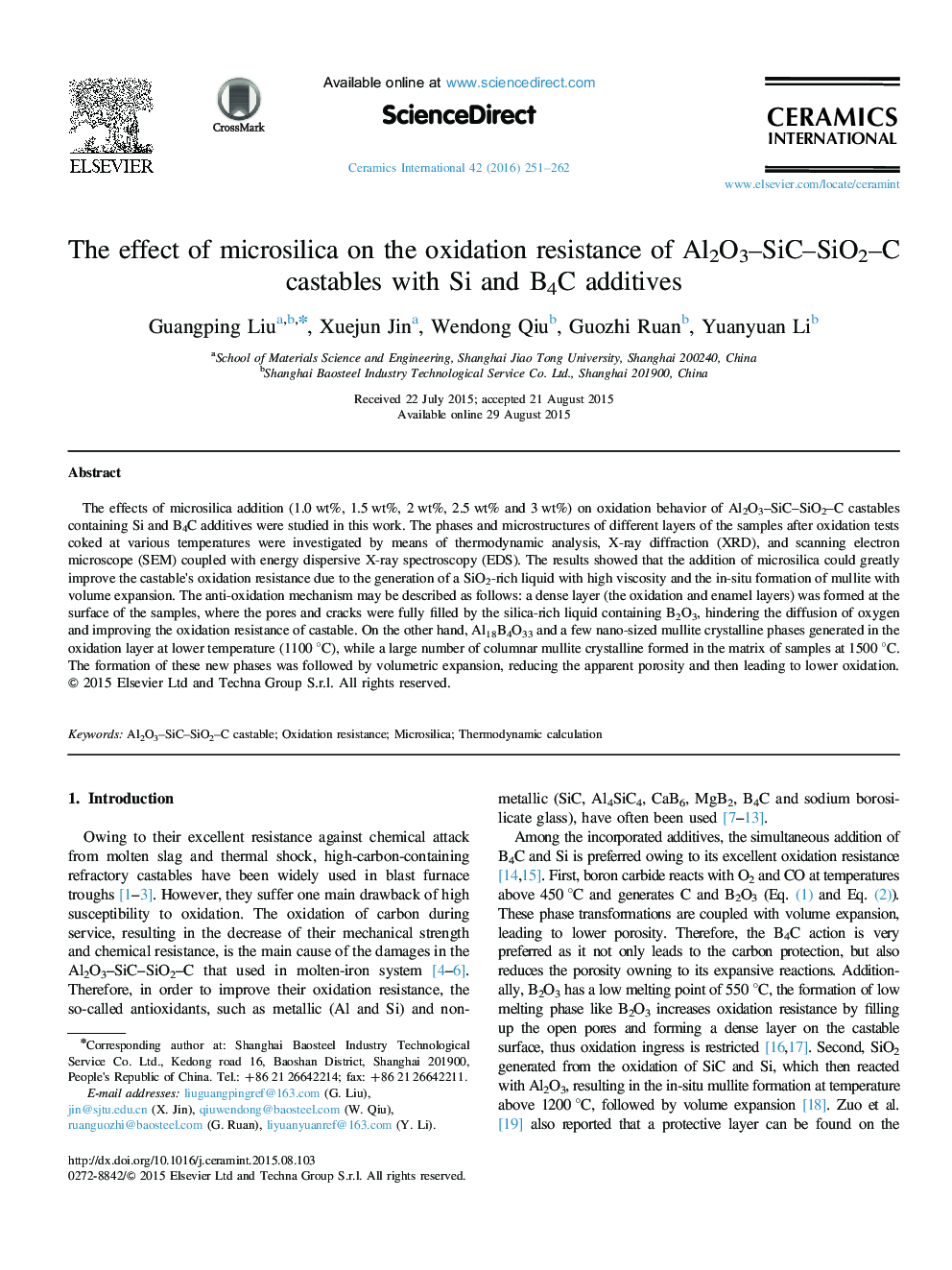| Article ID | Journal | Published Year | Pages | File Type |
|---|---|---|---|---|
| 1459427 | Ceramics International | 2016 | 12 Pages |
Abstract
The effects of microsilica addition (1.0 wt%, 1.5 wt%, 2 wt%, 2.5 wt% and 3 wt%) on oxidation behavior of Al2O3-SiC-SiO2-C castables containing Si and B4C additives were studied in this work. The phases and microstructures of different layers of the samples after oxidation tests coked at various temperatures were investigated by means of thermodynamic analysis, X-ray diffraction (XRD), and scanning electron microscope (SEM) coupled with energy dispersive X-ray spectroscopy (EDS). The results showed that the addition of microsilica could greatly improve the castable׳s oxidation resistance due to the generation of a SiO2-rich liquid with high viscosity and the in-situ formation of mullite with volume expansion. The anti-oxidation mechanism may be described as follows: a dense layer (the oxidation and enamel layers) was formed at the surface of the samples, where the pores and cracks were fully filled by the silica-rich liquid containing B2O3, hindering the diffusion of oxygen and improving the oxidation resistance of castable. On the other hand, Al18B4O33 and a few nano-sized mullite crystalline phases generated in the oxidation layer at lower temperature (1100 °C), while a large number of columnar mullite crystalline formed in the matrix of samples at 1500 °C. The formation of these new phases was followed by volumetric expansion, reducing the apparent porosity and then leading to lower oxidation.
Related Topics
Physical Sciences and Engineering
Materials Science
Ceramics and Composites
Authors
Guangping Liu, Xuejun Jin, Wendong Qiu, Guozhi Ruan, Yuanyuan Li,
